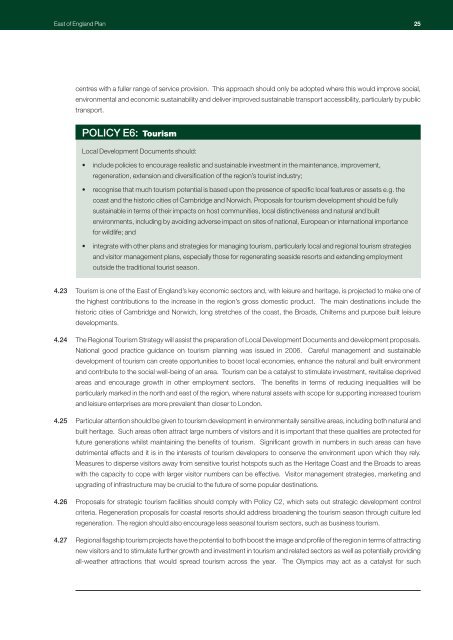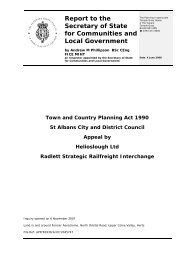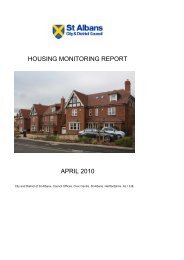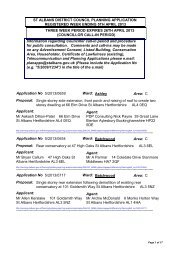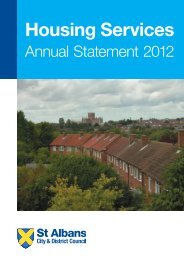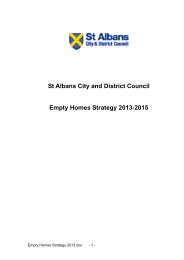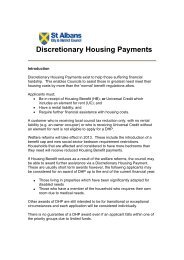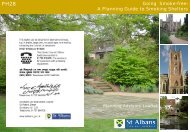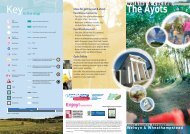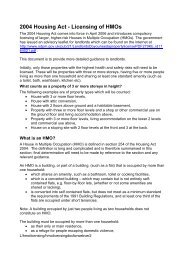RSS East Of England Plan - Broads Authority
RSS East Of England Plan - Broads Authority
RSS East Of England Plan - Broads Authority
You also want an ePaper? Increase the reach of your titles
YUMPU automatically turns print PDFs into web optimized ePapers that Google loves.
<strong>East</strong> of <strong>England</strong> <strong>Plan</strong> 25<br />
centres with a fuller range of service provision. This approach should only be adopted where this would improve social,<br />
environmental and economic sustainability and deliver improved sustainable transport accessibility, particularly by public<br />
transport.<br />
POLICY E6: Tourism<br />
Local Development Documents should:<br />
• include policies to encourage realistic and sustainable investment in the maintenance, improvement,<br />
regeneration, extension and diversification of the region’s tourist industry;<br />
• recognise that much tourism potential is based upon the presence of specific local features or assets e.g. the<br />
coast and the historic cities of Cambridge and Norwich. Proposals for tourism development should be fully<br />
sustainable in terms of their impacts on host communities, local distinctiveness and natural and built<br />
environments, including by avoiding adverse impact on sites of national, European or international importance<br />
for wildlife; and<br />
• integrate with other plans and strategies for managing tourism, particularly local and regional tourism strategies<br />
and visitor management plans, especially those for regenerating seaside resorts and extending employment<br />
outside the traditional tourist season.<br />
4.23 Tourism is one of the <strong>East</strong> of <strong>England</strong>’s key economic sectors and, with leisure and heritage, is projected to make one of<br />
the highest contributions to the increase in the region’s gross domestic product. The main destinations include the<br />
historic cities of Cambridge and Norwich, long stretches of the coast, the <strong>Broads</strong>, Chilterns and purpose built leisure<br />
developments.<br />
4.24 The Regional Tourism Strategy will assist the preparation of Local Development Documents and development proposals.<br />
National good practice guidance on tourism planning was issued in 2006. Careful management and sustainable<br />
development of tourism can create opportunities to boost local economies, enhance the natural and built environment<br />
and contribute to the social well-being of an area. Tourism can be a catalyst to stimulate investment, revitalise deprived<br />
areas and encourage growth in other employment sectors. The benefits in terms of reducing inequalities will be<br />
particularly marked in the north and east of the region, where natural assets with scope for supporting increased tourism<br />
and leisure enterprises are more prevalent than closer to London.<br />
4.25 Particular attention should be given to tourism development in environmentally sensitive areas, including both natural and<br />
built heritage. Such areas often attract large numbers of visitors and it is important that these qualities are protected for<br />
future generations whilst maintaining the benefits of tourism. Significant growth in numbers in such areas can have<br />
detrimental effects and it is in the interests of tourism developers to conserve the environment upon which they rely.<br />
Measures to disperse visitors away from sensitive tourist hotspots such as the Heritage Coast and the <strong>Broads</strong> to areas<br />
with the capacity to cope with larger visitor numbers can be effective. Visitor management strategies, marketing and<br />
upgrading of infrastructure may be crucial to the future of some popular destinations.<br />
4.26 Proposals for strategic tourism facilities should comply with Policy C2, which sets out strategic development control<br />
criteria. Regeneration proposals for coastal resorts should address broadening the tourism season through culture led<br />
regeneration. The region should also encourage less seasonal tourism sectors, such as business tourism.<br />
4.27 Regional flagship tourism projects have the potential to both boost the image and profile of the region in terms of attracting<br />
new visitors and to stimulate further growth and investment in tourism and related sectors as well as potentially providing<br />
all-weather attractions that would spread tourism across the year. The Olympics may act as a catalyst for such


